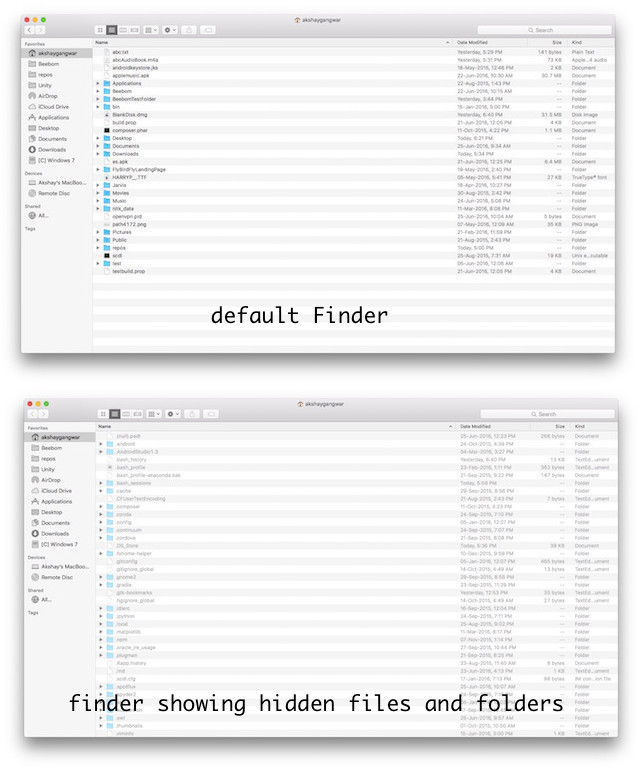
For the longest time, Samsung has stuck to its ideals. The Korean giant has often been rebuked for selling smartphones with sub-par internals at heftier prices but it seems the growing presence of Chinese phone makers in India has finally got the better of it. And while Samsung is already pitting its Galaxy M series against Xiaomi, Realme, and others in the budget segment, their new Galaxy A series is here to take on the assault in the mid-range.
The Galaxy A50 is the top-end variant in this lineup with a striking AMOLED display, gradient design, triple cameras, and a massive battery for Rs. 19,990. I had been itching to try out this smartphone since Samsung announced it during MWC 2019.
We’re grateful to Samsung for lending us the black Galaxy A50, which I’ve been using daily for the past few weeks. Now, I’m ready to determine if the Galaxy A50 merits your investment, how it stacks up against the popular Poco F1, and if it’s the smartphone to consider under Rs 20,000. Let’s delve in:
Galaxy A50: Specifications
Here are the complete specifications of the Galaxy A50:
| Dimensions | 158.5 x 74.7 x 7.7 mm |
| Display | 6.4-inch Full-HD+ Super AMOLED |
| Processor | octa-core Exynos 9610 (2.3 GHz, Cortex A73 + 1.7 GHz Cortex A53) |
| GPU | Mali-G72 |
| RAM | up to 6GB |
| Internal Storage | 64GB, expandable up to 256GB |
| Rear Cameras | 25MP (F/1.7) + 8MP (F/2.2) ultra-wide + 5MP (F/2.2) depth |
| Front Camera | 25MP (F/2.0) |
| Operating System | Android 9 Pie-based One UI |
| Connectivity | Wi-Fi 802.11 ac, dual VoLTE, Bluetooth 5.0, A-GPS, GLONASS, BDS, NFC, USB Type-C, 3.5mm headphone jack |
| Sensors | Accelerometer, Magnetometer, Ambient Light, Proximity, and Gyroscope |
| Battery | 4,000mAh & 15W charging |
| Colors | Black, White, Blue |
Galaxy A50: Unboxing
Unlike the minimalistic Galaxy M-series packaging, criticized by users, Samsung now packs all expected items in the Galaxy A50 box, including a case and accessories.
- Galaxy A50 handset
- 15W charging adapter
- USB Type-C cable
- 1x Silicone case
- 1x Earphones
- 1x SIM ejector pin
- User Manuals
Galaxy A50: Design and Build
Samsung aligns with contemporary trends in its recent releases, and the Galaxy A50 epitomizes this shift. The device boasts a striking prismatic rear panel that immediately captures attention, enticing users to engage with its design. This exemplifies the allure of gradient phones.
The Galaxy A50’s captivating prismatic rear panel invites playful exploration.
Though our Galaxy A50 comes in black, it appears more like a deep gray, often adorned with rainbow hues. The rear panel showcases a 3D “glasstic” design (a blend of polycarbonate and glass) that doesn’t feel cheap, reflecting light beautifully from various angles. I adore it, often finding myself mesmerized by its appearance.
We even posted an appreciation of the Galaxy A50 rear panel on Twitter, just for fun. You can check it out here. The smartphone features tactile and robust buttons, including the standard power and volume rocker, without the inclusion of a Bixby button, which is a welcome omission. Additionally, it offers a USB-C charging port, a 3.5mm headphone jack, and a speaker at the bottom.
The glossy curved rear panel and slender build of the Galaxy A50 ensure a comfortable in-hand feeling, which I find satisfactory. Despite packing a large battery, the smartphone feels lightweight and easily slips away, though it does get smudged and scratched easily. Our review unit is already scratched up on the rear, but the shimmering iridescent back panel compensates for this, and you can always use a case.
IP68 water and dust resistance at this price point is a blessing for consumers.
In-display Fingerprint Sensor
This marks Samsung’s debut with an in-display optical fingerprint sensor, distinct from the ultrasonic sensor found in the Galaxy S10 and S10+. The Korean tech giant has succumbed to the trend, though its execution falls short. The sensor’s performance is notably sluggish, leading to frustration with prolonged use.
Like many smartphones equipped with in-display fingerprint sensors, the registration process remains slow. Despite encountering similar issues with other devices last year, such as the Galaxy A50, I grew accustomed to it. However, the device’s unlocking speed disappoints me.
The Galaxy A50’s in-display fingerprint scanner proves to be a significant letdown.
Samsung Galaxy A50 takes a couple of seconds to unlock and open the home screen, notably slower than other phones with an in-display fingerprint sensor, such as the OnePlus 6T or the new Vivo V15 Pro. The ripple animation, reminiscent of the Galaxy S10, exacerbates its sluggishness, often resulting in jitters.
The sensor is highly unreliable, frequently prompting an error message to ‘keep your finger on the sensor a little longer’, which becomes frustrating over time. You must firmly press and hold your finger on the optical in-display fingerprint sensor for an extended period to unlock the phone successfully. You can also unlock the device from the always-on display, albeit with a slightly longer wait.
It was frustrating for me, resorting to the less-secure face unlock for my needs.
Galaxy A50: Display
The Galaxy A50 boasts a tall 6.4-inch Full-HD+ Super AMOLED display with a 19.5:9 aspect ratio and 1080 x 2340 pixels resolution. Featuring a pixel density of 404ppi, it offers one of the best panels in its price range—unrivaled. Familiar with Samsung devices, you’d appreciate the consistently exceptional panel quality.
The Galaxy A50’s display panel is vibrant, with deep blacks and rich colors. It offers deep blacks (which I’ve been wanting to switch from my Nokia 7 Plus) and higher contrast for easy viewing outdoors. Rewatching Death Note on Netflix is an absolute joy on this immersive full-screen.
In the image above, the Galaxy A50 features a waterdrop-style notch, dubbed the Infinity-U display by Samsung, housing the selfie camera. There’s a sizeable bottom chin, but it doesn’t affect the viewing experience. The device’s edges are moderately curved, and all apps handle the notch well.
While Samsung tends to offer a mildly saturated screen for a vibrant appearance and popping colors, you can adjust this by accessing the ‘Screen mode’ Settings. Additionally, there’s a slider available for tweaking the white balance to your preference, although it’s likely unnecessary.
Galaxy A50: Performance
The Galaxy A50 runs on Samsung’s in-house octa-core Exynos 9610 chipset, comprising 4 Cortex-A73 cores clocked at 2.3 GHz and 4 Cortex-A53 cores clocked at 1.7 GHz. Despite being named the Exynos 9610, it belongs to the Exynos 7-series chipset category rather than the high-end processors found in the Galaxy S10. The nomenclature is designed to attract users by implying flagship status, but in reality, it falls short.
Despite its controversial name, the Exynos 9610 chipset performs admirably, paired with up to 6GB of RAM and 128GB of storage. We’re testing the 4GB/64GB variant and I’m quite satisfied with its overall performance.
The Galaxy A50 effortlessly handles day-to-day tasks, with multiple apps running smoothly in the background and no noticeable lag when switching between them. There are occasional frame drops when unlocking or opening the camera, but overall, the experience is smooth. This is further enhanced by the updated One UI software, which I’ll delve into below.
Aside from typical social media and work apps, I also edited and rendered a 2-minute 1080p video using Adobe Premiere Clip to test the Exynos 9610’s capabilities. It took about 1 minute and 2 seconds, which is commendable for mobile videography.
Regarding gaming, I have no complaints. Playing PUBG Mobile on the Galaxy A50 has been exceptional. It supports high frame rates and HD graphics settings by default, as shown below, and performs admirably. Surprisingly, it outperforms my Snapdragon 660-powered Nokia 7 Plus, which defaults to medium settings and experiences gameplay stuttering.
PUBG Mobile runs acceptably at these settings, but noticeable stutters and frame drops occur while driving or engaging in squad battles. I recommend lowering the graphics to medium for smoother gameplay. Although your focus may be solely on PUBG Mobile, I’ve also tested Asphalt 9 and Mortal Combat on the Galaxy A50 without encountering any issues.
Galaxy A50: Performance Benchmarks
The real-world performance of the Galaxy A50 is swift, but for those who require benchmark figures, here they are: The single and multi-core Geekbench 4 scores are approximately 1700 and 5300 respectively. The Exynos 9610 achieves an overall rating exceeding 144,500 on AnTuTu.
You’ll find the Geekbench and AnTuTu scores for the Galaxy A50 attached below:
The Exynos 9610 chipset here is often compared to Qualcomm’s Snapdragon 660 SoC, showing similar benchmark performance. While Exynos 9610 excels in single-core performance, Snapdragon 660 leads in multi-core scores, notably in the quad-camera Galaxy A9.
Galaxy A50: Cameras
Samsung adopts the multi-camera trend from the Galaxy A7 to the Galaxy A50, offering enhanced flexibility. The triple camera setup includes a 25MP (f/1.7) sensor, an 8MP (f/2.2) ultra wide-angle lens, and a 5MP (f/2.2) depth sensor, resembling the Galaxy A7 configuration.
Prior to delving into the camera samples, let’s examine the features of the camera app on the Galaxy A50. It offers Live Focus (bokeh mode), Pro mode, slow motion, and hyperlapse video recording.
The default capture resolution is 12MP, but you can easily switch to 3:4H (25MP) for full-resolution shots. Additionally, the device includes a Scene Optimizer to adjust colors based on recognized scenes.
Furthermore, Samsung integrates ‘Bixby Vision’ for information retrieval when pointing the camera at objects, partnered with services like Foursquare, Myntra, and Pinterest. AR emojis are also incorporated into the camera app.
Now, here are some camera samples I captured:
Daylight Camera Samples
The Galaxy A50’s camera captures good, crisp shots. Despite leaning towards warmer tones, the high dynamic range, detail, and color reproduction result in impressive shots for a Samsung mid-range smartphone. However, in low light, the Galaxy A50 falls short. While pictures occasionally turn out well with sufficient light and detail, noise and lacking highlights can make them appear lackluster. You can view samples here:

Pritam Chopra is a seasoned IT professional and a passionate blogger hailing from the dynamic realm of technology. With an insatiable curiosity for all things tech-related, Pritam has dedicated himself to exploring and unraveling the intricacies of the digital world.




